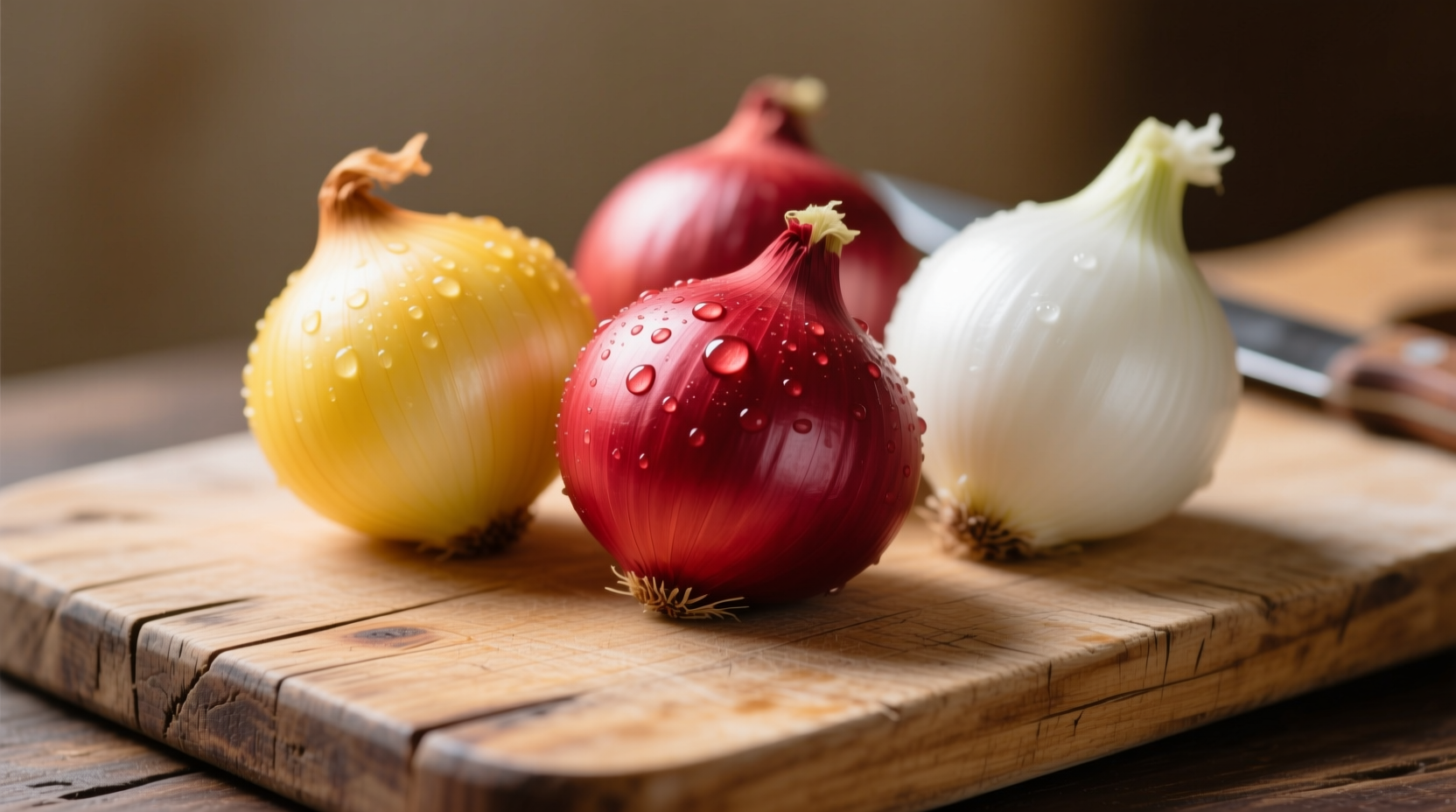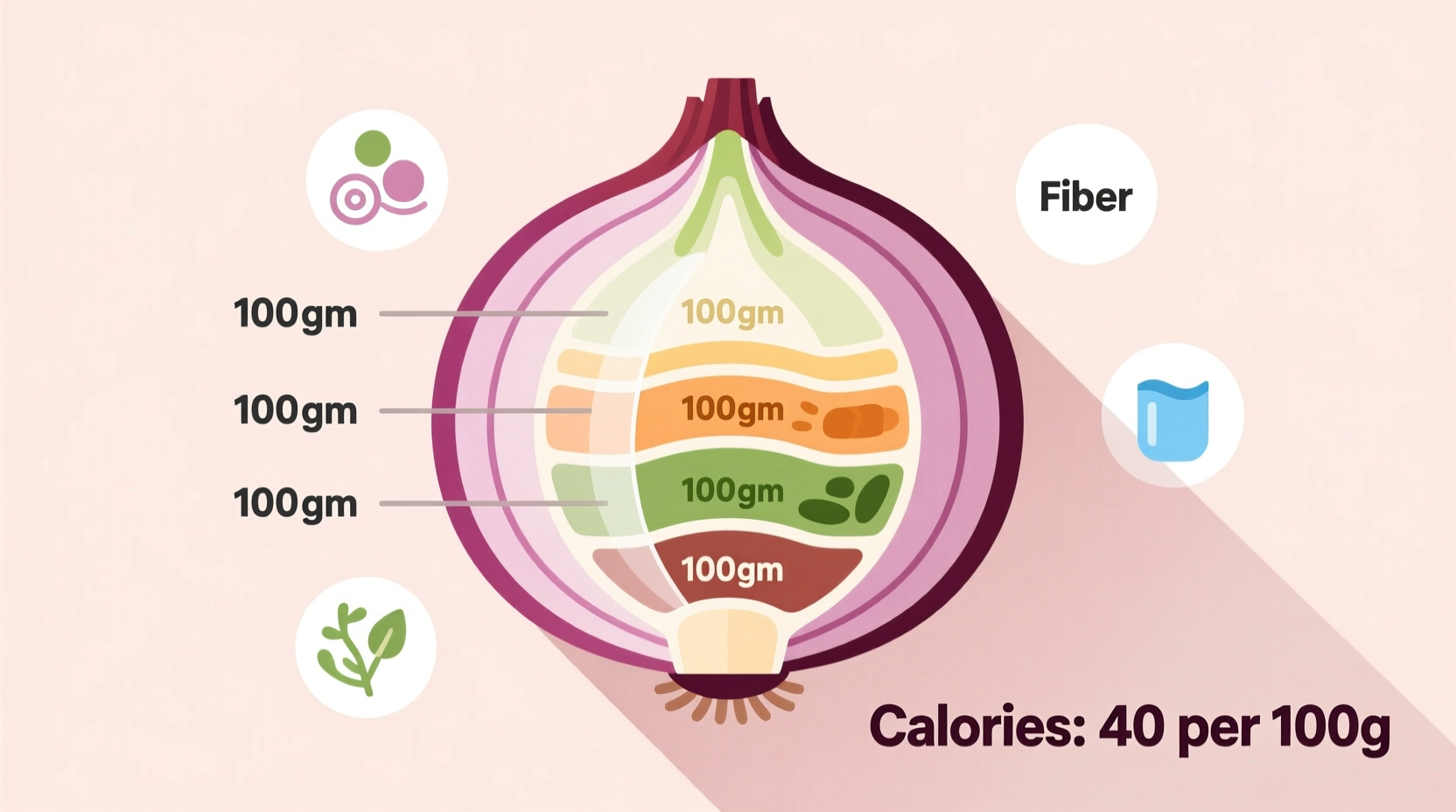Understanding the exact calorie content of everyday ingredients like onions helps make informed dietary choices without sacrificing flavor. Whether you're meal prepping, tracking macros, or simply curious about what's on your plate, knowing the precise nutritional value of onions empowers you to cook with confidence.
Onion Nutrition Facts: What's Really Inside
Onions rank among the lowest-calorie vegetables you can add to your meals. According to the USDA FoodData Central database, the standard nutritional profile for raw onions per 100 grams looks like this:
| Nutrient | Amount per 100g | Daily Value % |
|---|---|---|
| Calories | 40 kcal | 2% |
| Total Fat | 0.1 g | 0% |
| Carbohydrates | 9.3 g | 3% |
| Dietary Fiber | 1.7 g | 6% |
| Sugars | 4.2 g | - |
| Protein | 1.1 g | 2% |
| Vitamin C | 7.4 mg | 8% |
| Folate (B9) | 19 mcg | 5% |
This nutritional powerhouse delivers essential vitamins and minerals while contributing minimal calories to your daily intake. The carbohydrate content primarily comes from natural sugars and beneficial fiber that supports digestive health.
Calorie Differences Across Onion Varieties
Not all onions are nutritionally identical. While the calorie differences between varieties remain relatively small, understanding these variations helps when precision matters for dietary planning:
- Yellow onions (most common cooking variety): 44 calories per medium onion (110g)
- Red onions (often used raw): 40 calories per medium onion (110g)
- White onions (popular in Mexican cuisine): 38 calories per medium onion (110g)
- Shallots (more concentrated flavor): 72 calories per 100g
- Green onions (scallions): 32 calories per 100g
The slight variations stem from differences in water content and natural sugar concentrations. Red onions typically contain slightly more antioxidants but virtually identical calorie counts compared to yellow varieties.

Practical Applications for Meal Planning
Knowing how many calories in a medium onion helps you make smarter choices in the kitchen. Here's how to leverage this information:
When sautéing onions as a flavor base, remember that cooking concentrates flavors but doesn't significantly change calorie density. A cup of cooked onions contains about 64 calories compared to 60 calories in a cup of raw onions. The minor increase comes from water evaporation during cooking.
For those tracking onion carbohydrate content specifically, a medium onion provides approximately 10 grams of carbs, with 1.7 grams coming from fiber. This makes onions suitable for most moderate-carb diets, though strict low-carb dieters might want to moderate portions.
Health Benefits Beyond Calorie Counting
While the onion nutritional value shines in its low-calorie profile, these allium vegetables offer impressive health benefits that extend far beyond basic nutrition:
Onions contain quercetin, a powerful antioxidant associated with reduced inflammation and improved heart health according to research published in the Journal of Nutrition. The chromium content helps regulate blood sugar, making onions particularly valuable for those managing diabetes.
The prebiotic fiber in onions feeds beneficial gut bacteria, supporting digestive health in ways that calorie counting alone doesn't capture. This explains why nutritionists emphasize whole food benefits rather than focusing solely on calories in a raw onion.
Contextual Understanding: When Onion Calories Matter
For most people, the calorie content of onions falls into the "negligible" category. A standard restaurant salad might contain 20-30 grams of raw onions, contributing just 8-12 calories to the entire dish. However, specific dietary contexts change this equation:
- Strict calorie-restricted diets (under 1,200 calories daily): Every calorie counts, making portion awareness valuable
- Ketogenic diets: Monitoring onion carbohydrate content becomes essential when limiting net carbs to 20-50g daily
- Competitive bodybuilding during cutting phases: Precision tracking includes all ingredients
For the average healthy adult, onions represent a flavor-enhancing ingredient with minimal caloric impact. The USDA Dietary Guidelines consistently recommend increasing vegetable consumption, and onions easily fit this pattern without significant calorie concerns.
Common Misconceptions About Onion Nutrition
Several myths persist about onion nutrition that deserve clarification:
Many believe caramelized onions are significantly higher in calories than raw onions. While the cooking process concentrates natural sugars, the actual calorie increase remains minimal—about 5-10% more per volume due to water loss. The real calorie concern comes from added fats during cooking, not the onions themselves.
Another misconception suggests that red onion vs white onion calories differ substantially. In reality, the nutritional profiles are nearly identical, with minor variations in antioxidant content rather than calories.
Practical Tips for Maximizing Onion Benefits
To get the most from onions while managing calorie awareness:
- Use raw onions in salads and salsas to preserve maximum vitamin C content
- When sautéing, use minimal oil (1-2 tsp per onion) to avoid unnecessary calories
- Store onions in a cool, dry place to maintain nutritional value longer
- Pair onions with healthy fats like olive oil to enhance absorption of fat-soluble antioxidants
Understanding the precise calories in an onion for weight loss contexts helps maintain dietary balance without sacrificing flavor. Onions provide volume and satisfaction with minimal caloric cost, making them valuable for sustainable eating patterns.











 浙公网安备
33010002000092号
浙公网安备
33010002000092号 浙B2-20120091-4
浙B2-20120091-4